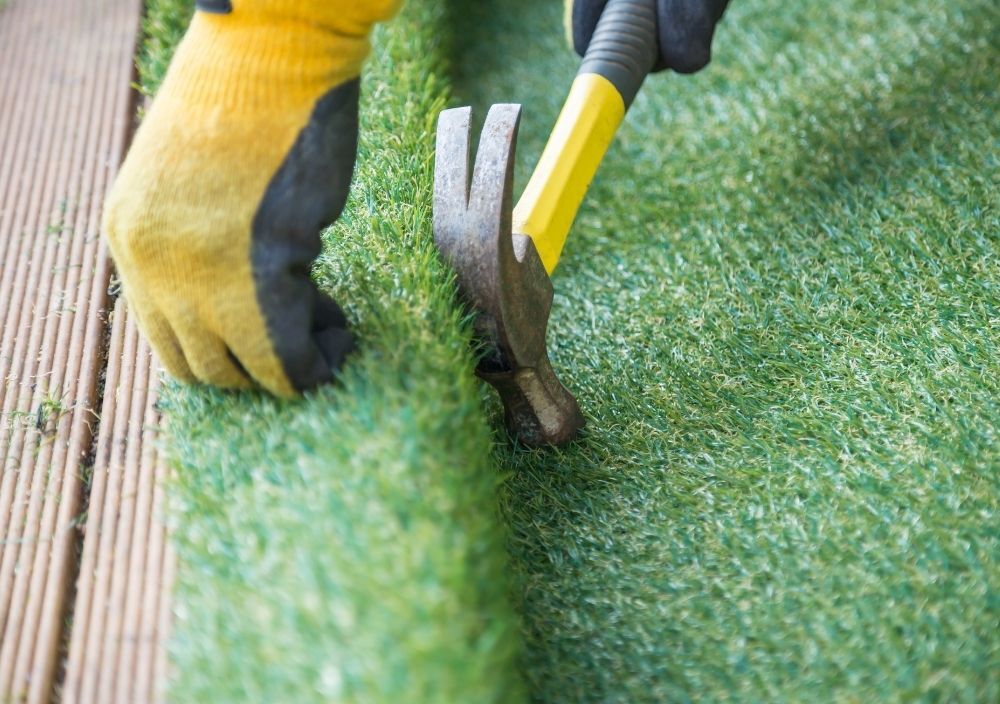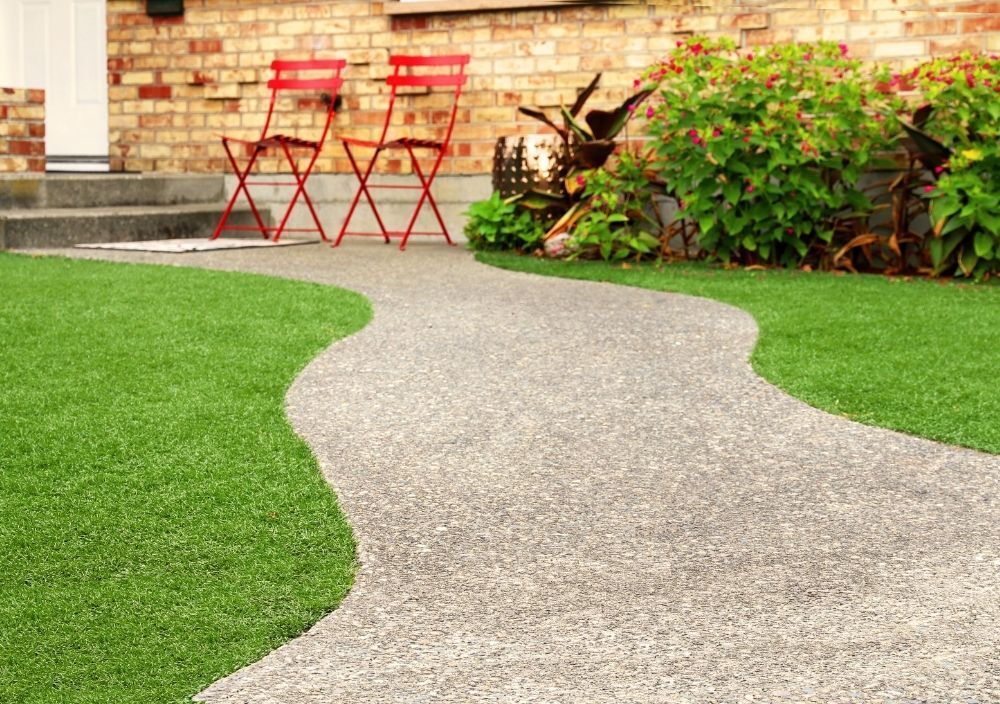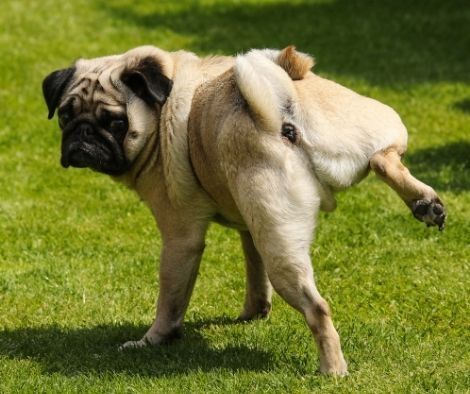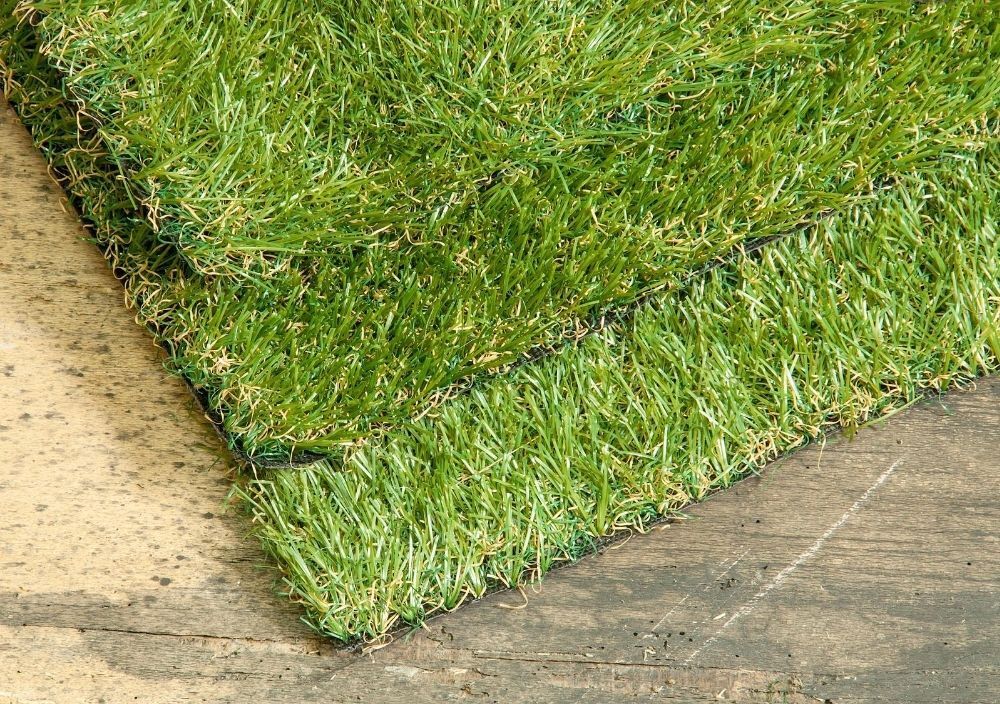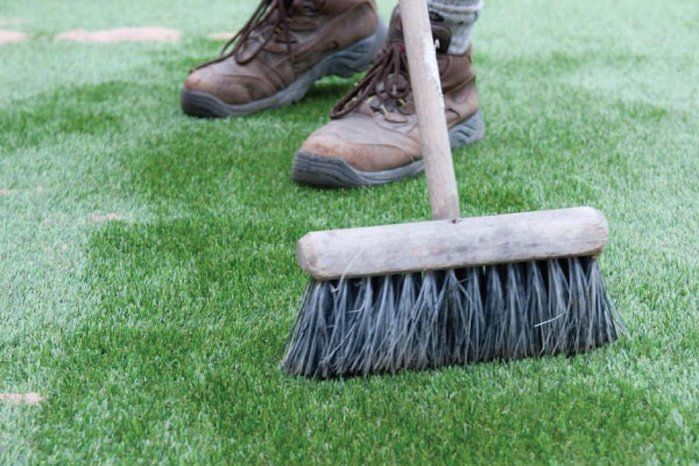Why Choose Artificial Grass?
So why should you think of replacing your natural lawn with a synthetic grass alternative? Perhaps we should start with a reminder of what’s involved with maintaining a great looking real lawn...
Well, to have a good, healthy-looking lawn there are a number of actions you need to do, ideally, each year, to ensure you get the lawn you want. Alternatively, you can employ a garden or lawn specialist to these actions for you and in these scenarios, the cost comparison for an artificial lawn is very compelling!
So let’s start with autumn activity, whether you have a real lawn or fake lawn the leaves falling from trees onto your lawn are unsightly. However, as well as being unsightly if they are left too long in a dense pile they will stop light getting to your lawn, this will result in the grass dying away and result in you having a section of your lawn needing repair – so it’s important to keep on top of this. The same urgency isn’t there for artificial grass. If you are a little less bothered about the leaves on your lawn you could leave them longer before brushing them up and when you do there will be a perfectly
green lawn underneath.
Common sense approach
to an artificial lawn
Another autumn activity is scarifying. Scarifying can be done either with a special scarifier or with a fine rake and both perform the purpose, which is to remove thatch, dead grass and moss from your lawn providing the space for new grass to grow through. The presence of moss in a lawn, as well as not looking too good, has the negative effect of restricting your grass from growing. It also has a negative effect on the drainage of your lawn. Once you’ve finished scarifying your lawn will look a bit of a mess as it will take about 6 to 8 weeks before new shoots start to grow through.
This will take you through to spring when the longer daylight hours will cause your grass to grow quicker. This is when the process of mowing begins. Mowing will stimulate the roots to spread and ideally, you should be looking to do this once every two weeks in spring and weekly in summer.
Next, you should water your lawn regularly but lightly, ideally with rainwater as it will be more costly from your mains supply. As spring creeps into summer you will need to check your lawn for weed growth and remove these. Most avid gardeners will advocate removing weeds like Plantains and dandelions by hand using a trowel or daisy grabber and for clover, buttercups and medick a rake before mowing will start the process of killing them off.
Cleaning artificial grass
To aid healthy grass growth you do not want your lawn compacting so to aid with this it is recommended that you aerate your lawn regularly. This is done by pushing a garden fork into the ground to about 10cm and rocking the fork back and forth. This should be done across the whole lawn at about 10cm intervals.
The other activity which should accompany mowing is edging your lawn. As well as making your lawn look neat it will also prevent the spread of grass into your borders. There are several ways to do this with the most common being either an electric strimmer or edging shears.
Artificial grass and dog pee
As well as watering, feeding your lawn will aid its growth and health. As a bare minimum, a feed in the spring and in the summer is recommended.
Depending on how well you’ve maintained your lawn will determine whether you also need to do patch repairs on your lawn which either can involve reseeding the area or removing a section and replacing with some new turf.
Well, we think that covers it. So what about an artificial grass lawn?
Well if you have pets and there are little bits of residue a clean with some warm soapy water and a hard brush rinsed off with a hose or watering can should do the trick. If you do see any moss forming near the edges again a brush with a stiff brush. If any weed does form on top or manage to find its way through a simple spray with a weed killer will do the trick but these will be few and far between.
That’s it... really that’s about it. So when you compare cost, time and effort you’ll see why more and more people are having artificial grass installations.
Ready for a new artificial grass lawn?
Need help?
Looking for Artificial Grass near me?
Frequently Asked Questions
AREAS COVERED BY ZEST ARTIFICIAL GRASS INSTALLERS:
Artificial Grass Installation Leeds
, Artificial Grass Installation Lincoln
, Artificial Grass Ilkeston
, , Artificial Grass Installation Nottingham
, Artificial Grass Installation Long Eaton
, Artificial Grass Installation York
, Artificial Grass Installation Coventry
, Artificial Grass Installation Leicester
, Artificial Grass Installation Northampton
, Artificial Grass Installation Peterborough
, Artificial Grass Installation Reading
,
Artificial Grass Installation Kenilworth , Artificial Grass Installation Leamington Spa , Artificial Grass Installation Warwick , Artificial Grass Installation Rugby ,
Artificial Grass Installation Bourne , Artificial Grass Installation Stamford , Artificial Grass Installation Spalding , Artificial Grass Installation Holbeach , Artificial Grass Installation Sleaford , Artificial Grass Installation Grantham , Artificial Grass Installation Oakham ,
Artificial Grass Installation Chelmsford , Artificial Grass Installation Ipswich , Artificial Grass Installation Clacton on Sea , Artificial Grass Installation Colchester ,
Artificial Grass Installation Sheffield , Artificial Grass Installation Rotherham , Artificial Grass Installation Doncaster , Artificial Grass Installation Chesterfield , Artificial Grass Installation Barnsley , Artificial Grass Installation Worksop , Artificial Grass Installation Mansfield , Artificial Grass Installation Dronfield , Artificial Grass Installation Dinnington , Artificial Grass Installation Retford , Artificial Grass Installation Matlock ,
Artificial Grass Installation Crawley , Artificial Grass Installation Oxford , Artificial Grass Installation Portsmouth , Artificial Grass Installation Luton , Artificial Grass Installation Newbury , Artificial Grass Installation High Wycombe , Artificial Grass Installation Southampton , Artificial Grass Installation Bath ,

